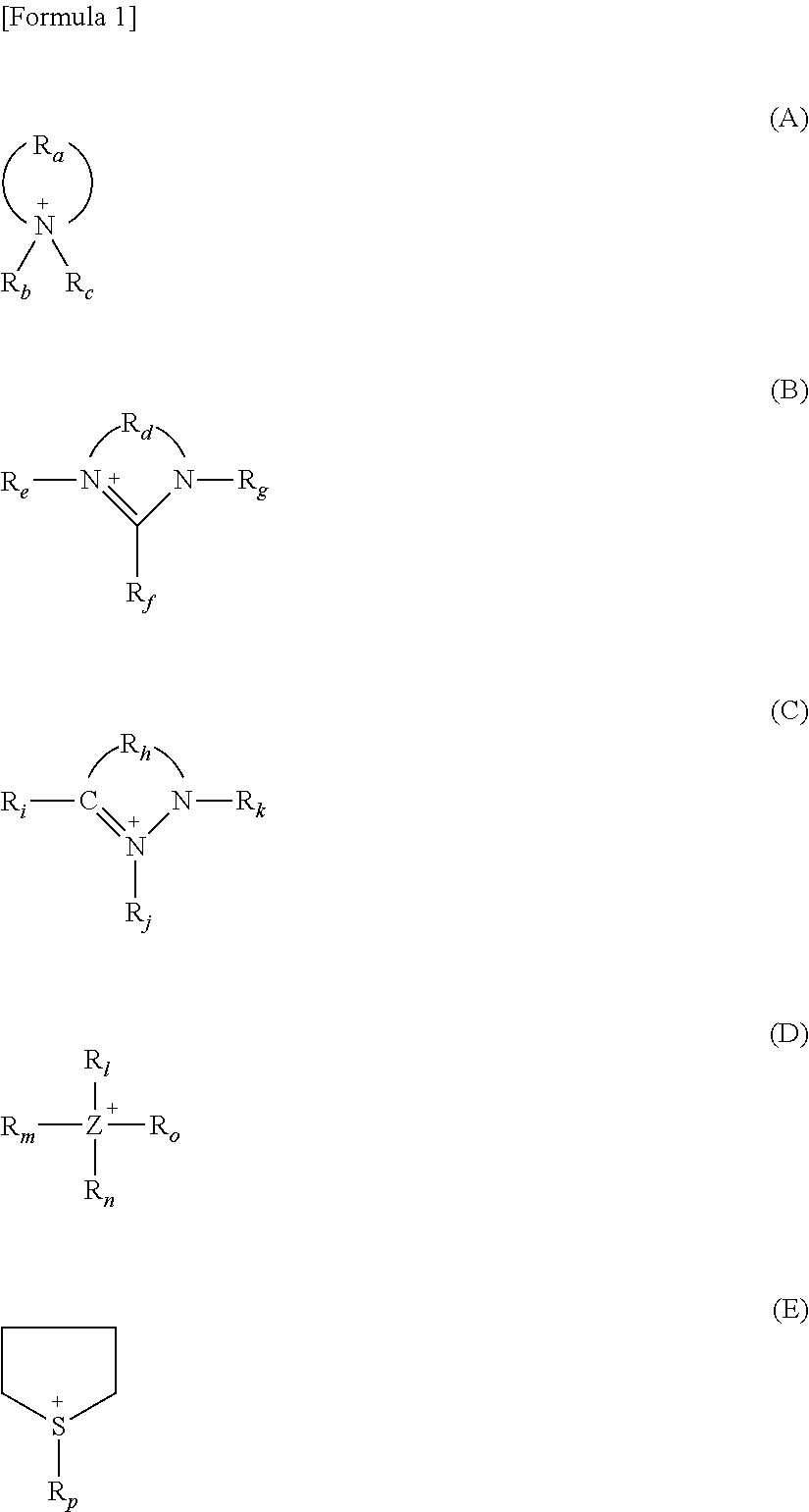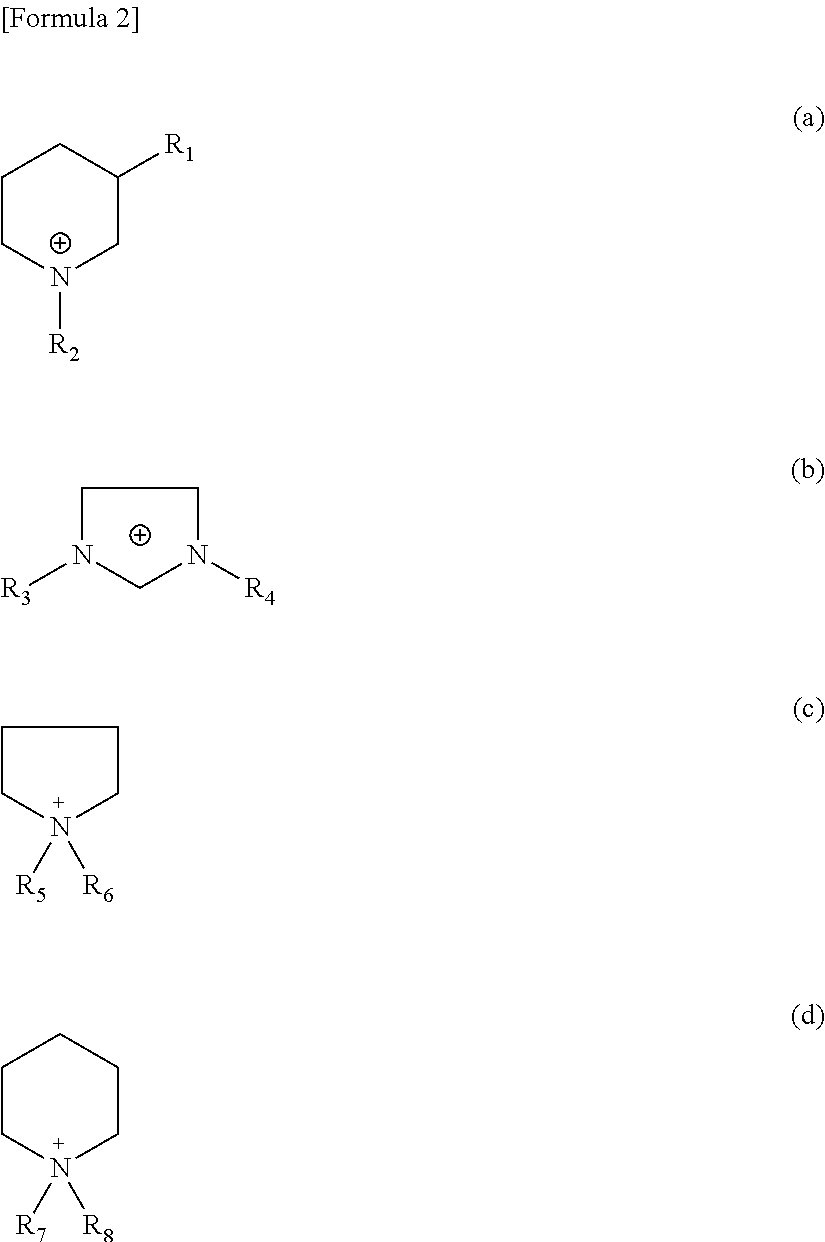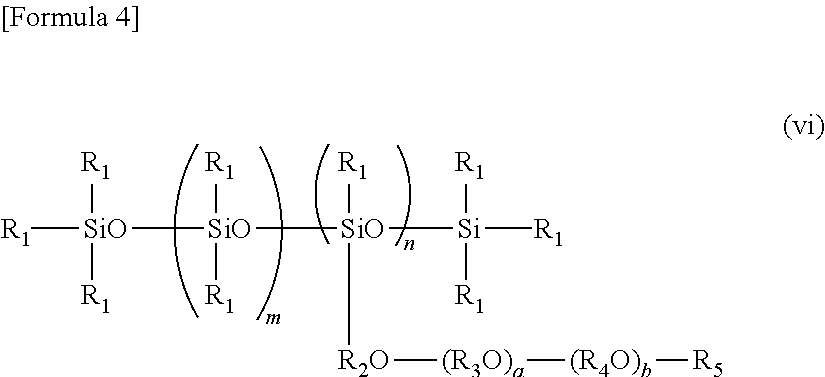Water-dispersible acrylic pressure-sensitive adhesive composition, pressure-sensitive adhesive layer, and pressure-sensitive adhesive sheet
a technology of acrylic and waterdispersible acrylic, applied in the direction of pressure sensitive film/foil adhesives, synthetic resin layered products, etc., can solve the problems of attracting dust or dirt, affecting the peeling strength of acrylic, etc., to achieve excellent antistatic properties, excellent adhesive properties, and removal.
- Summary
- Abstract
- Description
- Claims
- Application Information
AI Technical Summary
Benefits of technology
Problems solved by technology
Method used
Image
Examples
example 1-1
Preparation of Acrylic Emulsion Polymer
[0253]A vessel was charged with 90 parts by weight of water, and 94 parts by weight of 2-ethylhexyl acrylate (2EHA), 2 parts by weight of methyl methacrylate (MMA), 4 parts by weight of acrylic acid (AA), and 6 parts by weight of a nonionic-anionic reactive emulsifier (AQUALON HS-10 (trade name) manufactured by DAI-ICHI KOGYO SEIYAKU CO., LTD.) as shown in Table 1 and thereafter, the materials were stirred and mixed by a homomixer to form a monomer emulsion. A reaction vessel equipped with a condenser tube, a nitrogen-introducing tube, a thermometer, and a stirrer was then charged with 50 parts by weight of water, 0.01 parts by weight of a polymerization initiator (ammonium persulfate), and 10% by weight of the monomer emulsion and the mixture was subjected to emulsion polymerization at 75° C. for 1 hour with stirring. Subsequently, after 0.07 parts by weight of a polymerization initiator (ammonium persulfate) was further added, all the remaini...
examples 1-2 to 1-8
, and Comparative Examples 1-1 to 1-6
[0257]Monomer emulsions were prepared as in Example 1-1, except that the types of the raw material monomers and emulsifiers, the added amounts, etc., were changed as shown in Tables 1 and 2. Using the monomer emulsions, water-dispersible acrylic pressure-sensitive adhesive compositions and pressure-sensitive adhesive sheets were obtained as in Example 1-1. The weight average molecular weight (Mw) of solvent-insoluble components and solvent-soluble components in the acrylic emulsion polymers obtained in the examples and comparative examples is as shown in Tables 1 and 2.
[Evaluations]
[0258]The water-dispersible acrylic pressure-sensitive adhesive compositions and the pressure-sensitive adhesive sheets obtained in the examples and the comparative examples were evaluated by the measurement method or the evaluation method described below. Tables 1 and 2 show the results of the evaluation.
(1) Breaking Elongation of Acrylic Pressure-Sensitive Adhesive C...
example 2-1
Preparation of Acrylic Emulsion Polymer
[0300]A vessel was charged with 90 parts by weight of water, and 94 parts by weight of 2-ethylhexyl acrylate (2EHA), 2 parts by weight of methyl methacrylate (MMA), 4 parts by weight of acrylic acid (AA), and 6 parts by weight of a nonionic-anionic reactive emulsifier (AQUALON HS-10 (trade name) manufactured by DAI-ICHI KOGYO SEIYAKU CO., LTD.) as shown in Table 3 and thereafter, the materials were stirred and mixed by a homomixer to form a monomer emulsion. A reaction vessel equipped with a condenser tube, a nitrogen-introducing tube, a thermometer, and a stirrer was then charged with 50 parts by weight of water, 0.01 parts by weight of a polymerization initiator (ammonium persulfate), and 10% by weight of the monomer emulsion and the mixture was subjected to emulsion polymerization at 75° C. for 1 hour with stirring. Subsequently, after 0.07 parts by weight of a polymerization initiator (ammonium persulfate) was further added, all the remaini...
PUM
| Property | Measurement | Unit |
|---|---|---|
| breaking elongation | aaaaa | aaaaa |
| temperature | aaaaa | aaaaa |
| pore size | aaaaa | aaaaa |
Abstract
Description
Claims
Application Information
 Login to View More
Login to View More - R&D
- Intellectual Property
- Life Sciences
- Materials
- Tech Scout
- Unparalleled Data Quality
- Higher Quality Content
- 60% Fewer Hallucinations
Browse by: Latest US Patents, China's latest patents, Technical Efficacy Thesaurus, Application Domain, Technology Topic, Popular Technical Reports.
© 2025 PatSnap. All rights reserved.Legal|Privacy policy|Modern Slavery Act Transparency Statement|Sitemap|About US| Contact US: help@patsnap.com



